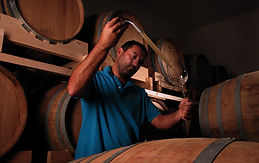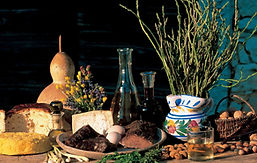
ISTRIA WINE TOURS




About Istria

Imagine mysterious land with foggy mornings hiding fabulous hilltop towns, colorful vineyards with old, authentic estates, greenery and blueness of Adriatic sea… Feel the sea breeze when you walk up, see picturesque seaside little towns with a maze of streets and stone houses, taste the traditional flavors and enjoy fine wines… To capture the essence of Istria you have to use all your senses… We invite you to discover wine & dine heritage which makes Istria an exceptional destination for all wine lovers and gourmets.


ISTRIA'S WINES
Istria is a land of exceptional wines, where ancient traditions meet modern innovation. The region is best known for its indigenous grape varieties, such as Malvazija Istarska and Teran, each offering a unique taste of Istria's terroir. Local winemakers expertly blend tradition with cutting-edge techniques, crafting wines that have earned international recognition. From fresh and crisp whites to bold, complex reds, every glass tells the story of Istria's sun-soaked vineyards, rich soil, and passionate winemaking heritage.
ISTRIA'S CUSINE
Istrian cuisine is a celebration of local ingredients and centuries-old culinary traditions. Fresh seafood, homemade pasta, wild asparagus, and the prized Istrian truffle are just some of the region’s gastronomic delights. Olive oil, known as Istria’s „liquid gold”, enhances every dish, while slow-cooked stews and the rare boškarin beef reflect the area’s rural roots. Paired with exquisite local wines, Istrian cuisine offers an unforgettable journey for the senses, blending Mediterranean and Central European influences into a unique and delicious experience.

WHAT OTHERS WRITE ABOUT ISTRIA
WINE ENTHUSIAST: 10 Best Wine Travel Destinations 2015
DECANTER MAGAZINE: Regional profile: Istria
THE NEW YORK TIMES: Sipping the Pleasures of Istria
HISTRICA - DISCOVER ISTRIA: Istrian wine
WINE ENTHUSIAST: Croatian wines on the Rise (page 3)
USA TODAY: Best Wine Regions to Visit (Croatia at #5)
WINE ENTHUSIAST: 12 Exciting Wine Regions You've Never Heard Of





INTERESTING FACTS ABOUT ISTRIAN WINES
Wine has been made in Croatia since it was introduced by Greek settlers 2,500 years ago – original vineyards are still intact on Stari Grad Plain on Hvar island.
In Istria history of wine has over 2000 years tradition, since the Roman emperor Marcus Aurelius brought vines to the warm Istrian soil.
Today, Croatia has 4 primary wine growing regions – continental (Slavonija, Zagorje and Zagreb), Istria, Kvarner and Dalmatia. These 4 major regions are divided into more than 300 smaller wine regions. There are 17,000 registered wine producers, 800 wineries producing controlled wines, 26,000 hectares of vineyards, 2,500 (mostly white) wines of controlled origin, 200 cultivated vine varietals, more than 60 indigenous vine varietals and 61 million liters of controlled wines.
Istrian wine Momjanski Muškat is perhaps the most splendid wine brand and now it is a Croatian product with protected designation of orgin!
As far back as 1935, it won a gold medal at a wine review in Brussels, and it was a favourite at the courts of Emperor Franz Joseph in Viena and King Emanuel III in Rome.
Peasants from the Italian province of Furlania are believed to have brought the white muscat to Istria around the year 1200. Over time, the vine adapted to the local hills surrounding small vilage Momjan and the special features of the region’s climate and soils, ultimately transforming into a separate variety – Momjanski Muškat.
Momjanski Muškat is a truly unique sort. It is sweet or semi-sweet, late-harvest wine of a deep golden colour with an aroma reminiscent of wild carnations, roses and sage offering a full and rounded taste. It is the perfect wine to pair not only with desserts, but with any fine dish as well. To bring out all its pleasing and noble properties, serve chilled to about 12°C.
Teran is an old Istrian autochthonous cultivar which was mentioned for the first time 600 years ago. Authors Marescalchi and Dalmass wrote how Teran was given to emperor’s ambassadors in 1390. In 1408 Teran was presented to Venitian ambassador and in 1411 Austrian ambassador. Until 100 years ago it was the main Istrian sort which was grown on most of the hither vineyards.
Teran wine is a full-bodied red wine with a high lactic acid content. It is very palatable, and highly prized by connoisseurs of fine wines. It has characteristic red colour, when stired in a glass gets a purple tones. Aroma is delicate, expressed and recognizable with typical fruity, raspberry scented dominating character. Relatively high content of total acids and a certain hue of acerbity, integrated into the high extract, gives this wine characteristic taste of full, strong, robust and yet pleasantly matched wine. Due to that especial fullness and a large quantity of polyphenols (tannins, anthocyans) and iron Teran is considered as therapeutic wine (in the past it was prescribed as a therapy for anaemia).
Due to it’s characteristics Teran is very nicely mached with pršut (prosciutto ham), chese and with meat, sausages, horseradish and wild game dishes. Teran is also a great appetizer.
At the temperature of 18 C it’s characteristics are best expressed.
Istrian Malvasia is a white wine containing between 11.5 and 13.5% alcohol.
Connoisseurs describe Malvasia as a variety of large oportunities which, according to content of aromatic components can be classified as semi-aromatic variety with a large flower-fruit aroma potential. It’s specific and discreet aroma which reminds us of acacia flower fragrance especialy if the grapes are from the higher and sunny positions.
Fruit aromas that usually dominate are apple, plum and apricot. When the wine is mature there’s a certain bitter almond taste too. Malvasia’s got straw-yellow colour with a golden hue and depending on technological method of processing and seed-processing the colour is moving from greenish-yellow through staw-yellow to golden-yellow tones.
Malvasia is the common name for a number of different or related varieties which have been cultivated by the inhabitants of the Mediterranean winegrowing areas since ancient times. Malvasia is grown even in Spain's Canary Islands, Portuguese Azores, as well as in the continent of these countries. It is also produced in France, Slovenia, Montenegro, Albania, California and Greece. According to many, it is precisely from Greece that its name derives.
It is one of the more interesting wines to pair with sea food, fish, risotto, pasta and white meat. Serve at a temperature of 8-10 °C.